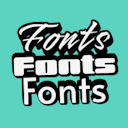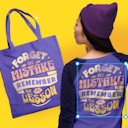Product
Templates
Resources
Company
Home
Blog
Tutorials
Steal these thumbnail secrets: hacks from top YouTubers
Steal these thumbnail secrets: hacks from top YouTubers

Youtube thumbnail secrets header image
Let’s face it: designing YouTube thumbnails isn’t glamorous. It’s not a 50-foot billboard or a gallery centerpiece—it’s a 1280x720 rectangle. But this tiny canvas carries massive weight. It’s the first impression, the click-getter, the difference between a viral video and one that dies in obscurity.
They seem simple at first, but once you start working, the questions pile up: How do you make your design stand out in a crowded feed? How do you maintain branding while grabbing attention? And how do you do it quickly when you’re juggling multiple projects?
If you’ve ever spent hours nudging text into place or wondering why a thumbnail feels “off,” you’re not alone. Thumbnails need to tell a story, make an impact, and look professional—all while being simple enough to absorb in a split second. It’s a tricky balance.
The good news? With the right techniques and tools, you can stop stressing and start creating thumbnails that perform great.
Let’s break down the hacks top YouTubers use (and the challenges we’ll solve along the way).
Table of contents
Hack #1: Create depth and drama with ease
If you’ve ever worked on a thumbnail that felt flat and lifeless, you know how frustrating it can be to make the composition feel dynamic. Depth is what turns a simple design into something that catches the eye.
Imagine you’re designing a thumbnail for a tutorial on “How to Master Branding with Color.” You’ve got your subject, maybe an image of a bold, colorful logo, and a supporting graphic like color swatches. Without layering, these elements might blend together and lose their impact.
To create depth, you need to separate the foreground, middle ground, and background. Place the logo or key visual front and center, blur the background slightly, and add subtle shadows to bring everything to life.
Shadows don’t just make objects pop—they add weight and realism to your design.
Kittl’s AI Background Remover lets you cut out elements with precision, so you can isolate your subject and layer it seamlessly over other visuals. Pair that with the Shadow Tool to adjust blur, opacity, and direction for a polished look that feels professional without taking hours to perfect.
Pro Tip: Double your shadows for more dimension. In Kittl, duplicate your cutout, apply a darker shadow to the bottom layer, and offset it slightly to create a richer, more realistic effect.
Hack #2: Let the background tell the story
The background of a thumbnail is more than just a backdrop—it’s the foundation of your story. A well-chosen background can immediately convey the mood of your design.
Let’s say you’re creating a thumbnail for a video about “Top Typography Trends in 2025.” Instead of a plain white background, you could use a subtle gradient or a blurred pattern of type to add intrigue. The background should complement your subject, not compete with it.
Let’s help you visualize it more:

Youtube video thumbnail image with subtle blue-green gradient
Pro Tip: Use Kittl’s color picker to match the tones in your background with key elements in your design. This creates a harmonious look that feels intentional and polished.
Hack #3: Brilliant typography without the fuss
Typography can make or break a thumbnail. It’s not just about what the text says but how it feels.
Let’s say you’re designing a thumbnail for a video about “The Dos and Don’ts of Logo Design.” The words need to be bold, clear, and placed strategically to amplify curiosity. “Logo Fails” in a bold, condensed font with a subtle shadow will grab more attention than a long, descriptive phrase.
The fewer words you use, the more impactful they’ll be.
This is what you can do on Kittl:

A Youtube Video thumbnail image with bold typography. The font is condensed with subtle shadow
So, instead of spending time adjusting letter spacing or struggling with text effects, you can use Kittl’s Dynamic Text Tools to experiment in real time.
Want your text to follow a curve? Just drag the sliders. Need to add a touch of drama with perspective? Adjust the handles directly, without converting text to shapes (so you can still edit the words later).
With an extensive font library and easy transformations, typography becomes less of a chore and more of a creative opportunity.
Pro Tip: Zoom out on your design to 25% size and check if your text is still legible and visually appealing. If it isn’t, simplify it further.
Hack #4: Faces and emotions steal the show
Humans are wired to respond to faces, especially those showing strong emotions. So faces are one of the most powerful tools in a thumbnail designer’s toolkit. They’re relatable, they evoke emotion, and they draw attention.
Imagine you’re designing a thumbnail for a branding workshop, and the video features a designer passionately explaining color psychology. A close-up of their face, showing their excitement or focus, can make the thumbnail feel human and engaging. Pair this with supporting text, like “Crack the Color Code,” to tease the video’s value.
Align the face perfectly within your composition, ensuring balance with other elements like text or graphics. If you’re working with a photo that feels flat, you can use subtle highlights or shadows to make the face pop without overpowering the rest of the design.
Pro Tip: Add a soft glow around the subject’s face to enhance focus and create a subtle sense of warmth.
Hack #5: Guiding the eyes through graphics
Designers know that small details can make a big difference. Graphics like arrows, highlights, or icons are subtle yet powerful tools for guiding the viewer’s attention.
For example, if you’re creating a thumbnail for a tutorial on “How to Use Negative Space in Design,” you could use a simple arrow to highlight the concept within the composition. These elements not only add clarity but also create movement within the design, making it more engaging.
With Kittl’s extensive Asset Library, you have instant access to customizable graphics that integrate seamlessly into your design.
Pro Tip: Use motion lines or curved arrows to subtly guide the viewer’s eye across the thumbnail, ensuring they focus on the key elements.
Hack #6: Test, refine, and experiment
Even the most experienced designers can’t predict exactly what will resonate with an audience. That’s why testing is essential.
Let’s say you’re torn between two thumbnail versions—one with a bold color scheme and another with a minimalist approach. Platforms like TubeBuddy make it easy to test both and gather data on which performs better.
In Kittl, saving and iterating on designs is effortless. You can duplicate your project, tweak it, and export multiple variations without rebuilding from scratch. This streamlined workflow encourages experimentation and ensures you’re not tied to a single idea.
Pro Tip: Keep a “master template” for your thumbnails in Kittl. This way, you can quickly create variations for testing while maintaining consistent branding.
Your thumbnail toolkit awaits
For designers, YouTube thumbnails are more than a task—they’re a chance to show off your expertise in storytelling, branding, and strategy. Whether you’re creating thumbnails for your own content, helping clients stand out, or elevating a brand’s online presence, the right approach can make all the difference.
Kittl empowers designers to move past the technical frustrations and focus on the creative process. From layering elements to experimenting with typography and testing variations, Kittl gives you the tools to explore limitless possibilities.
Ready to design thumbnails that stop the scroll? Dive into Kittl today and discover how effortless great design can be.
Related articles

Design
YouTube Banner Size Requirements and More for Desktop & Mobile
Are you experiencing blurry graphics in your YouTube banner? Or, is your YouTube profile image blurr...

Tutorials
How to make your 4:5 Instagram grid work in 2025
The new Instagram updates include off-center follower counts and the awkward name placement at the t...

Design
Designers are wasting their time - this is how they can stop
Did you know that it takes 20 minutes to get back on track with a project after being interrupted? F...















